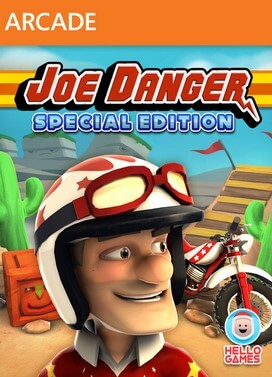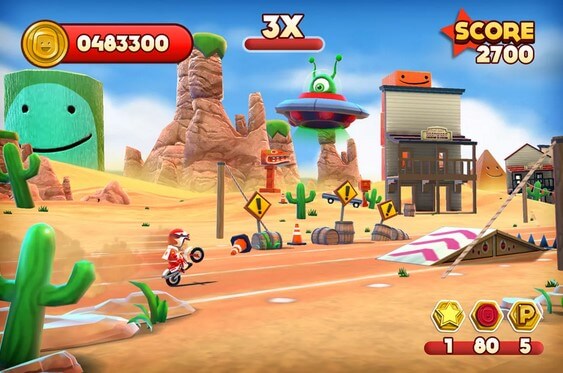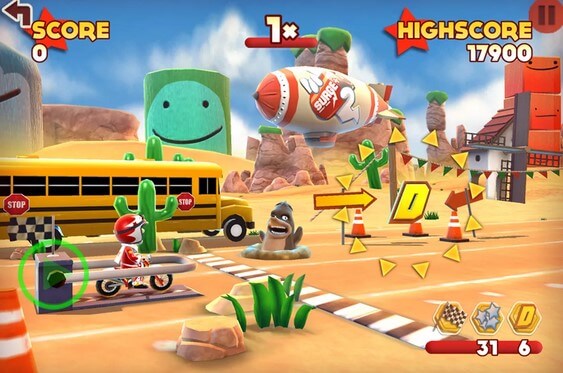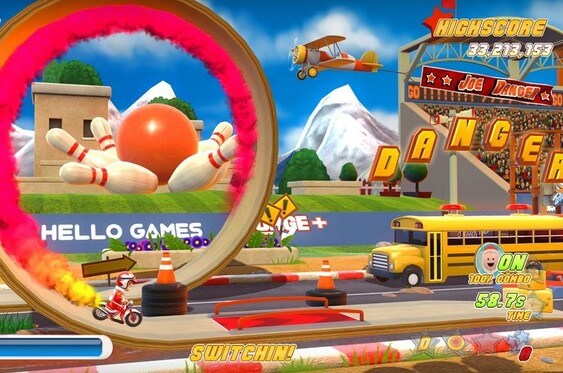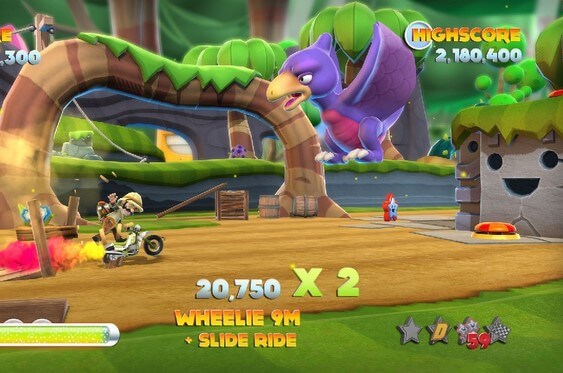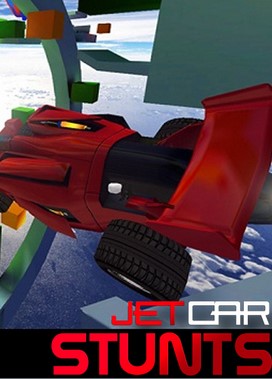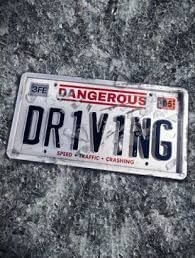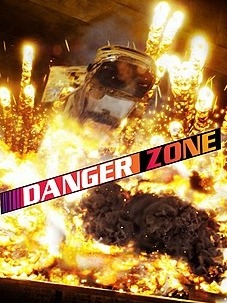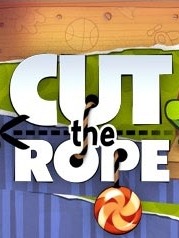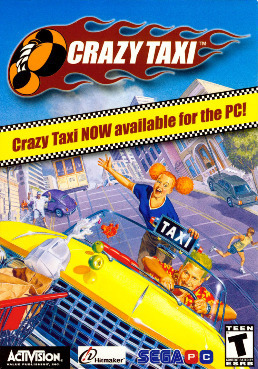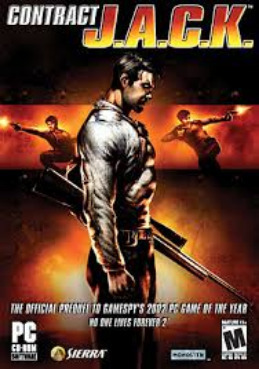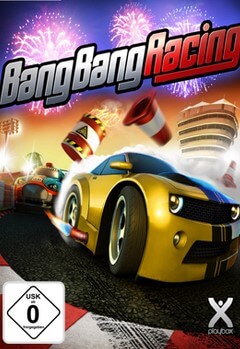Joe Danger is a side-scrolling video game incorporating elements of racing and platform games, and is the first game developed by Hello Games. The player controls the eponymous daredevil and navigates time-limited courses, aiming to complete enough objectives to continue to further rounds. Joe Danger is presented in a light-hearted way, with emphasis on stunts and maintaining speed.
It was released for the PlayStation 3, via the PlayStation Network, in June 2010, after Hello Games originally chose to publish it exclusively with Sony Computer Entertainment. A "Special Edition" for the Xbox 360, via the Xbox Live Arcade, was released on 14 December 2011; an iOS spinoff was released on 10 January 2013. In April 2015, a version for Android was released through the Google Play Store.
The game was promoted in the media through interviews with the four members of the development team, in particular with Hello Games's managing director, Sean Murray. The team used their official website and Sony's PlayStation Blog to maintain contact with fans and to keep them up to date on the project's progress. Much of the quality assurance process took the form of public beta testing at exhibitions.
On its release, Joe Danger received generally positive reviews; most reviewers praised the accessible gameplay and the ability to edit courses while playing them. Some suggested the game would have benefited from more options, such as sharing and rating user-generated content, and criticised the lack of an online multiplayer mode. Hello Games subsequently released downloadable content to add features that users and reviewers had requested in the months following the game's release. Using leaderboard statistics, Joe Danger was estimated to have sold at least 108,000 units in its first three months on sale. It was nominated for several awards, including the grand prize at the 2010 Independent Games Festival.
Gameplay
The player controls motorbike stuntman "Joe Danger" and guides him through ten "trials" to defeat his nemeses, the members of Team Nasty. The game uses elements of both racing and side-scrolling platform genres, in which the protagonist can move to the right and, by reversing, to the left as well as hopping over and ducking under various obstacles. Although the game is based on a two-dimensional plane, some of its courses are designed with three layers accessible by changing lanes. The bike is controllable in the air, allowing various tricks to be performed, for which points are awarded with higher scores awarded for long trick sequences, and for manoeuvring onto targets. Executing a stunt will build a "boost meter", which is used to increases Joe's speed, but drains the meter. The Select button is used to teleport Joe back to the last checkpoint passed.
Joe Danger's level design was directly influenced by the Sonic the Hedgehog game series, as evidenced by the use of avoidable spikes, vertical loops, and springs placed in levels to allow higher jumps. Some elements are designed to hinder the player, such as conveyor belts, which slow the motorbike, oversized boxing gloves, which will propel the player backwards and barricades, which make it necessary to switch to an alternative lane.
The primary goal in each level is to collect as many "stars" as possible. A star is collected for completing an objective, and once enough are collected, the next course is unlocked. Critics compared this process to that used in the Super Mario Bros. titles. The player is free to choose which objectives to complete, with the option of replaying a level to earn more stars. The most common objective is to finish a course within a time limit with as many points as possible. Other level-specific objectives include collecting a series of coins, hidden stars or letters spelling "Danger", while in others the player is required to land on every target, or to complete a course in one continuous sequence of tricks. Later levels require the player to do more than one objective simultaneously.
Joe Danger contains a sandbox mode, which allows the player to drag and drop objects onto the course to customise levels. This mode is integrated into some single-player levels where the game may instruct the player to introduce obstacles such as ramps to access later sections. New levels can be shared online with friends via the PlayStation Network. The game has a split screen multiplayer mode for up to four players on a selection of specially-made tracks. There is leaderboard support, initially limited to those on the player's PlayStation Network friend list.
Development
Hello Games was formed in 2008 by former Criterion and Electronic Arts employee Sean Murray together with three friends who had experience with British videogame developers Kuju, Climax and Sumo. Murray, who held technical director and lead programmer roles working on PlayStation 2 games Burnout 3: Takedown and Black, became managing director of Hello Games, with Grant Duncan as art director, Ryan Doyle as technical director and David Ream as creative director. The team gained their first experiences of creating their own games by making levels for Doom and Unreal. Doyle expressed the belief that smaller games could be created more cost-effectively by an independent group than by a larger company.
According to Doyle, the concept for Joe Danger arose from the team's wish to make "something that puts a smile on people's faces" similar to games such as Mario Kart and Micro Machines. An Evel Knievel toy was a main source of inspiration for the "Joe" character; the team had fun "firing that stunt cycle out of windows and down halls". Nevertheless, Murray likened work as an independent developer to "the reality of eating ice cream every day for every meal" as the novelty of working for themselves wore off. The team often spent more than 60 hours a week working on the project because of the "unrealistic" time scales for development and with only four team members, each had to fulfil several roles; they had no public relations representative nor did they have a business manager or a designer. No software design document was made throughout the production of Joe Danger, since the team felt they understood each other's ideas.
